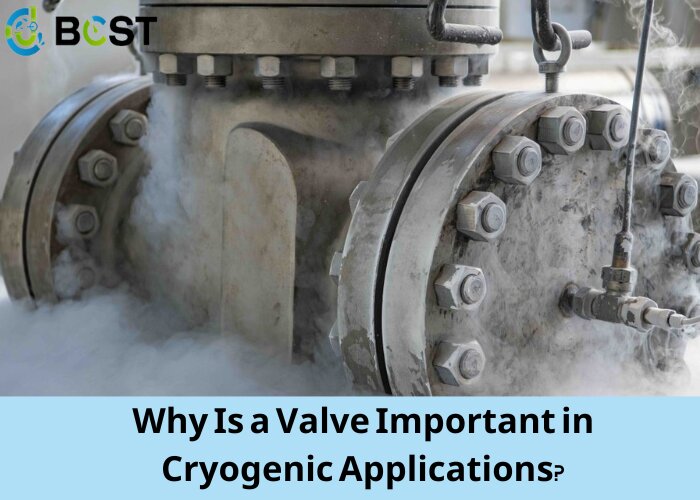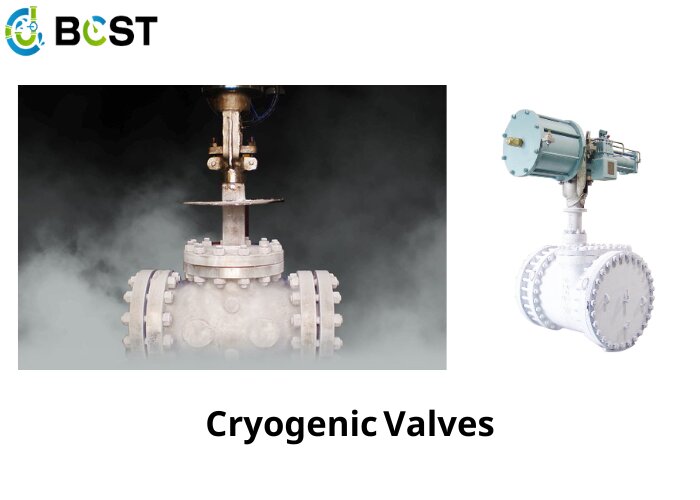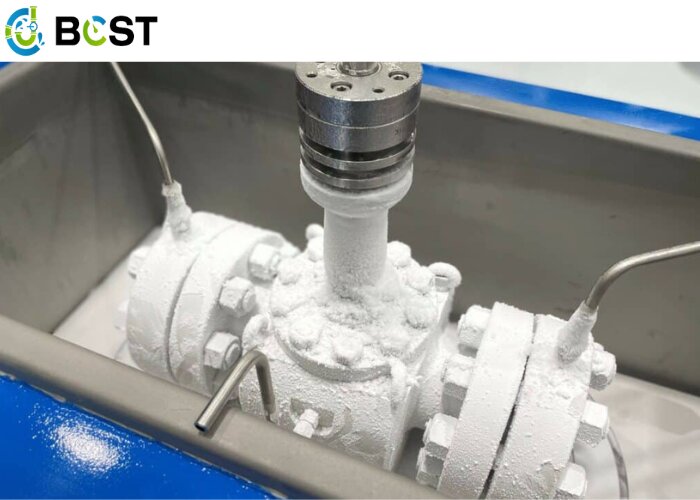
Cryogenic valves play a pivotal role in regulating the flow of liquefied gases such as nitrogen, oxygen, and liquefied natural gas (LNG) at temperatures nearing absolute zero. These valves must withstand the harsh conditions imposed by cryogenic environments, ensuring precise control and safe containment of these frigid substances. This blog delves into the crucial role of valves in cryogenic systems, exploring their design intricacies, challenges posed by low temperatures, and the indispensable contribution they make to the efficiency and safety of processes that rely on the controlled handling of extremely cold substances. Join us as we unravel the importance of valves in the world of cryogenics and the engineering marvels that enable them to function seamlessly in such demanding conditions.
What are Cryogenic Valves?

Cryogenic valves are used to handle, store, and transfer cryogens, as well as high-pressure fluids and extremely cold temperatures. Cryogenic valves are specialized valves that are designed to endure extreme pressure and temperature.
Cryogenic valves are widely employed in a wide range of industries, including LNG, petrochemicals, food processing, and many more. Because of its ability to transmit low-temperature fluids, these valves are used in a variety of sectors. Cryogenic valves are made with the correct materials to ensure that they can withstand chemicals as well as temperature and pressure changes.
Cryogen leakage is both dangerous and costly, given the cost of turning gas into a cryogen in the first place. When working with cryogens, it is critical to insulate the valves and pipes since ambient heat gains are a chronic issue. The physical properties of processing gases include working with gases such as LNG, oxygen, nitrogen, and helium. These liquids have the potential to transition rapidly and violently into the gas phase because they are unstable at atmospheric pressure.
Standard industrial valves are susceptible to extreme temperatures because they expand and contract at different rates in hot and cold settings, resulting in seal failure and inadvertent leaking. These heat rises have long hampered the investigation, transit, and storage of cryogenic gas operations.
How to Choose a Cryogenic Valve?

Choosing valves for cryogenic applications might be difficult. Buyers must evaluate the conditions in factories and on ships. Furthermore, due to the specific features of low-temperature cryogenic fluids, individual valve performance is required. Proper selection ensures the protection of equipment, plant dependability, and operational safety.
Materials Used
Cryogenic valve manufacturers must evaluate the materials they choose because the device’s body must withstand temperature swings as well as any potential expansion and contraction motions induced, keeping the mounting from deforming. In light of this, it should be noted that austenitic stainless steel can be used at temperatures lower than -100 °C and ferritic stainless steel at temperatures higher than that. Small-diameter, low-pressure valves, on the other hand, are composed of copper or aluminum alloys.
Safety
Always put your safety first. When selecting a valve for a cryogenic application, keep in mind that liquids can expand to extremes. As a result, ensure that the valve is vented in some way.
Types of Valve
Despite the lack of particular valve type rules in cryogenic service, 3-way ball valves are widely used due to their ability to ensure a tight shutdown. Triple offset and high-performance butterfly valves also move in quarter-turns. Because ball valves can be more expensive, cryogenic gate valves are typically utilized in place of them for larger valve sizes. Ball valves are more expensive up front, but they save money in the long run due to greater longevity and performance. Although client preference usually determines which type is chosen, flange and welded versions are most commonly used for cryogenic piping connections.
Temperature
Over the last few years, the use of ultra-low temperature valves has steadily increased. One of the most important types of equipment in air separation, is petrochemical, natural gas, and other industries. In addition to being toxic, flammable, and explosive, the working medium is also low in temperature. Furthermore, the high permeability necessitates many special requirements for valve materials and design. It must not only perform at the specified temperature, but it must also function well at room temperature.
The low-temperature valve has a longer stem and a higher packing component than the standard-temperature valve. Its purposes are to reduce the amount of heat entering the device from the outside, to keep the stuffing box above zero degrees Celsius so that the stuffing can function normally, and to keep the stuffing from freezing too much at the valve stem and upper valve cover of the stuffing box component. There are frozen or frosted components.
Maintenance
To build cryogenic service valves, a clean chamber should be utilized, and the valves themselves should be lubricant-free or use cold-service lubricants. For clean service, machine oil, grease, dirt, or other foreign things should not be present in the valves. Any extraneous substance can impede the performance of the valve at cryogenic temperatures. When acquiring a cryogenic valve, the operator should request documented cleaning instructions to guarantee that the manufacturer followed the correct methods when assembling the valve. Cameron takes the necessary precautions to keep valve components free of impurities and methodically prepares them for clean-room assembly.
Final Thoughts
Valves in cryogenic systems are the unsung heroes, standing guard against the challenges posed by extreme cold, ensuring precision, and safeguarding the integrity of processes involving liquefied gases. The delicate balance between functionality and durability in cryogenic valves underlines the indispensable dedication of the cryogenic valve in the aspect of safety, efficiency, and success, however, all of it depends on the controllable operation of substances under the low temperature.






